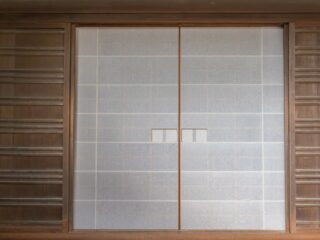
When it comes to cooling a commercial space, selecting the right-size air conditioning (AC) unit is critical for both comfort and energy efficiency. Unlike residential units, which are typically smaller and have a more standard range of capacities, commercial AC units come in a wide variety of sizes to cater to the diverse needs of businesses and public spaces. These units must be capable of servicing areas from small offices to large warehouses, each with unique cooling demands.
The size of commercial AC units is generally measured in tons or BTUs (British Thermal Units) per hour, where one ton is equivalent to the ability to cool 12,000 BTUs in an hour. Commercial AC sizes can range from a small 2-ton unit, suitable for a modest office space, to massive systems with capacities exceeding 100 tons for large buildings or complexes.
Choosing an appropriately sized system is more than a mere function of space; it also involves considering factors such as the building’s geographic location, insulation properties, window size and orientation, occupancy, and the heat generated by equipment and lighting. Too small an AC unit will run continuously, trying to reach a set temperature without success, leading to increased wear and increased energy consumption. Conversely, an overly large unit can lead to short-cycling, where the AC frequently turns on and off, resulting in inefficient operation and undue stress on the system components.
In the competitive commercial marketplace, balancing the initial investment against operating costs while ensuring the comfort of occupants is a complex task. The following sections will guide you through understanding capacity requirements, the types of commercial AC systems available, calculation methods for sizing, installation considerations, and tips for maintenance and improving efficiency.
Understanding AC Capacity and Your Space Requirements
When selecting a commercial air conditioning unit, understanding the capacity needed to effectively cool your business space is essential. AC capacity is typically measured in tons or British Thermal Units (BTUs) and is a critical factor in determining which unit will work most efficiently for your space.
One ton of AC can cool approximately 12,000 BTUs per hour, which roughly translates to 400-600 square feet of commercial space. However, this is a generalized estimate and the actual cooling capacity needed can be affected by many factors including ceiling height, building layout, window size and exposure, insulation quality, and even the local climate.
To begin sizing your AC unit, calculate the square footage of the space to be cooled. Next, factor in the specifics about your space. For example, a building with high ceilings will require more cooling power, as there is more air volume to regulate. Similarly, spaces with poor insulation will lose cool air quickly and require larger units to maintain a comfortable temperature, contributing to higher energy costs.
For precise calculations, energy professionals will consider the mentioned factors as well as aspects like the number of occupants, the heat generated by equipment and lighting, and the hours of operation. These complex variables can significantly impact the heat load, which, in turn, dictates the capacity of the AC unit required. Consulting with a heating, ventilation, and air conditioning (HVAC) professional is advisable to ensure the selected AC unit size matches your commercial space requirements for optimal cooling efficiency.
The Different Types of Commercial AC Systems
Commercial AC systems come in various types to accommodate the wide range of commercial spaces, from small shops to large office buildings and industrial warehouses. Understanding the different types of AC systems can help businesses decide which one is best suited for their needs.
1. Single Split Systems: These are the most common type and are ideal for small commercial spaces like individual offices, small cafes, or boutiques. Each unit includes one indoor and one outdoor component and can serve one room or space. They are affordable and easy to install but require one unit per room.
2. Multi-Split Systems: Similar to single split systems, multi-split systems connect multiple indoor units to a single outdoor unit. This setup is ideal for businesses that need to cool multiple rooms without having numerous outdoor units, which can be unsightly and occupy valuable space.
3. VRF/VRV Systems: Variable Refrigerant Flow (VRF) or Variable Refrigerant Volume (VRV) systems are suitable for medium to large spaces such as hotels or commercial buildings. They offer precise temperature control and high energy efficiency, allowing for different areas to be cooled to different temperatures simultaneously.
4. Rooftop Units: These large units are installed on the roof and are typically used in larger buildings like supermarkets or factories. They are self-contained systems that can offer both heating and cooling and are powerful enough to manage the climate of larger spaces efficiently.
5. Chillers: These units are part of a centralized system that uses chilled water to cool the air and are commonly used in high-rise buildings or large commercial complexes. They require a cooling tower and a water distribution system, which makes them more complex and costly to install and maintain.
Each type of AC system has its own benefits and limitations regarding installation, cost, and suitability for different commercial environments. A proper assessment of the commercial space’s size, cooling needs, and budget is essential in selecting the most appropriate AC system.
How to Calculate the Right Size AC Unit for Your Business
Choosing the correct size for a commercial air conditioning unit is essential for ensuring comfort, energy efficiency, and cost-effectiveness. An oversized unit can lead to unnecessary energy consumption and uneven temperature control, while an undersized unit might not adequately cool the space, leading to wear and tear due to overworking.
8. To start calculating the right size AC for your business, you need to consider several factors:
1. Square footage of the space: Measure the length and width of each room or area to be cooled and multiply to find the square footage. Combine the totals for multiple rooms to get an overall value.
2. Ceiling height and volume of the space: Higher ceilings mean more volume, which requires additional cooling capacity.
3. Insulation and construction: Well-insulated spaces retain cool air better, potentially reducing the needed capacity. The materials used in constructing the building can influence its heat retention and dissipation.
4. Heat-generating equipment and occupancy: More people or equipment in the space generally means more cooling is needed.
5. Windows and external walls: The number, size, and orientation of windows affect how much heat enters the building. South-facing windows can increase cooling requirements.
Once you have a good estimate of the cooling load, a formula is often used to translate this into BTUs (British Thermal Units) or tons of air conditioning, with 12,000 BTUs equal to 1 ton of AC capacity. Commercial HVAC professionals use detailed calculations, including Manual N from ACCA (Air Conditioning Contractors of America) for commercial load calculations, to provide precise sizing for your specific needs.
In short, to calculate the right size AC unit for your business, you should conduct a comprehensive assessment of the space’s characteristics, energy profile, and the specific needs of the occupants and processes within the building. Consulting with an HVAC professional is highly recommended to ensure the most accurate sizing and selection of a commercial AC unit.
Installation Considerations for Commercial AC Units
When it comes to installing commercial AC units, several pivotal factors must be considered to ensure optimal performance and longevity of the system. The first consideration is selecting a suitable location for the unit. It should be positioned in a spot that allows for adequate airflow and is easily accessible for maintenance and repairs. The external part of the unit should be placed away from areas with high dust levels or those prone to debris accumulation which can obstruct the airflow and reduce efficiency.
The sizing of the unit should be clearly understood before installation. A unit that is too small will not be effective in cooling the space, while a unit that is too large can lead to excessive humidity, increased energy consumption, and wear and tear on the system. Working with a qualified HVAC professional who can provide an accurate load calculation is essential.
Another critical factor is ensuring the existing electrical infrastructure can support the new AC unit. Commercial AC systems often require different electrical voltages and may need additional circuits or electrical upgrades. Proper ductwork installation is also crucial; it needs to be properly sealed and insulated to prevent energy loss and maintain consistent temperature control throughout the commercial space.
In addition, consider the installation’s impact on your business operations. Professional installers should be able to provide a clear timeline and work plan to minimize disruptions. Always ensure that the installation complies with local building codes and regulations, which may require permits or inspections.
Ultimately, the correct installation of commercial AC units is a complex procedure that demands thorough planning, technical expertise, and attention to detail to achieve the best results for your commercial space.
Maintenance and Efficiency Tips for Your Commercial AC System
Proper maintenance and efficiency optimization of commercial AC systems are crucial for ensuring longevity, reducing operating costs, and maintaining a comfortable environment for occupants. To keep your commercial AC unit functioning optimally, consider these maintenance and efficiency tips:
1. Regular Maintenance Schedule: Establish a regular maintenance schedule with a professional HVAC technician. Regular checks typically include cleaning or replacing air filters, inspecting refrigerant levels, checking for leaks, and ensuring all components are functioning correctly. Maintenance contracts can be beneficial for staying on top of this.
2. Clean Condenser and Evaporator Coils: Dirty coils reduce the system’s ability to cool the space and cause the system to work harder, increasing energy usage and costs. Keep them clean to maintain efficiency.
3. Check and Seal Ductwork: Leaky ducts can significantly diminish system efficiency. Inspect ductwork periodically and repair any leaks or damage to maintain proper air distribution.
4. Upgrade Insulation: Improving insulation in your building can reduce heat gain or loss, easing the load on your AC system and saving energy.
5. Invest in Programmable Thermostats: These devices allow for better control of indoor temperature and climate throughout various times of the day or in different zones of the building, maximizing comfort while minimizing energy waste.
6. Consider Energy-Efficient Upgrades: When parts need replacing, choose energy-efficient models that can reduce energy consumption. Also, consider the benefits of upgrading to a newer, more efficient system if your existing unit is nearing the end of its lifespan.
By implementing these maintenance and efficiency strategies, you can prolong the life of your commercial AC unit, reduce unexpected repair costs, and create a more sustainable operation.







